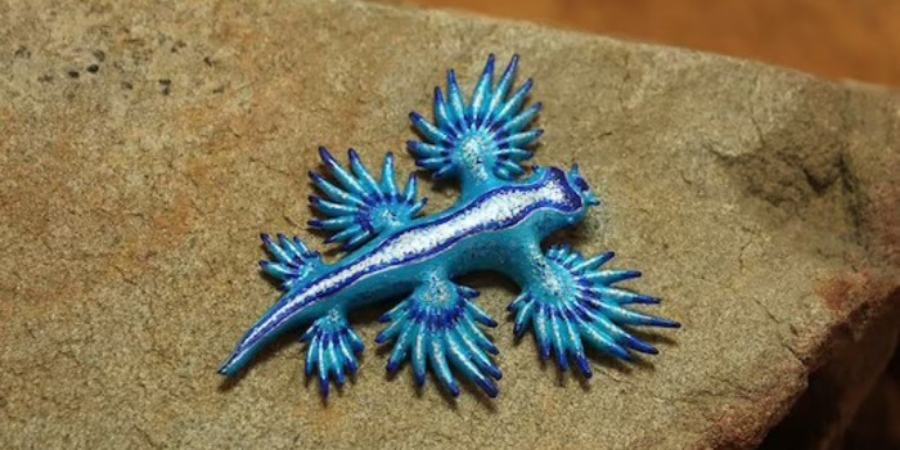

Introduction:
The vast expanse of the world's oceans hides numerous mysteries, and one of the most intriguing creatures dwelling in its depths is the Blue Glaucus. Also known as the blue dragon or sea swallow, this mesmerizing sea slug captivates marine enthusiasts and scientists alike with its vibrant hues and unique adaptations. Join us on a journey into the fascinating world of the Blue Glaucus, where beauty meets survival in the ever-changing dance of the ocean.
Description:
The Blue Glaucus (Glaucus atlanticus) is a small but striking sea slug that measures only a few centimeters in length. Its ethereal appearance is marked by a vivid blue coloration on its upper surface, adorned with silvery stripes and spots that resemble the patterns found on some species of fish. This dazzling display serves a crucial purpose in the world of marine biology: camouflage.
Camouflage and Adaptations:
In the vastness of the open ocean, the Blue Glaucus relies on its camouflage to evade predators and approach its prey unnoticed. By floating upside down on the ocean surface, the sea slug's blue color blends seamlessly with the water, making it nearly invisible from below. This unique strategy allows it to mimic the appearance of the sky, effectively disguising itself from predators such as birds and larger fish.
The Blue Glaucus's adaptations extend beyond its camouflage. It possesses specialized appendages called cerata on its body, which not only enhance its surface area for better buoyancy but also play a crucial role in its ability to feed. These cerata store the venomous cells from the sea creatures the Blue Glaucus consumes, providing a potent defense mechanism against potential threats.
Feeding and Diet:
Despite its small size, the Blue Glaucus has earned a fearsome reputation as a predator of the oceans. It primarily preys on the highly venomous Portuguese Man o' War, a colonial hydrozoan that floats on the ocean's surface. The sea slug feeds on the Man o' War's tentacles, absorbing and storing the venomous cells within its cerata. This stolen weaponry not only serves as a deterrent against predators but also contributes to the Blue Glaucus's own offensive capabilities.
Conservation Status:
The Blue Glaucus, like many marine species, faces threats from human activities such as pollution, climate change, and habitat destruction. As an integral part of the ocean's delicate ecosystem, it is essential to understand and protect these fascinating creatures. Conservation efforts that focus on preserving the health of our oceans contribute not only to the survival of the Blue Glaucus but also to the overall well-being of marine life.
Conclusion:
The Blue Glaucus stands as a testament to the incredible diversity and adaptive strategies that exist in the world's oceans. From its mesmerizing appearance to its ingenious survival tactics, this tiny sea slug captures the imagination of those who explore the mysteries beneath the waves. As we continue to unveil the secrets of the Blue Glaucus, we gain a deeper understanding of the intricate balance that sustains life in our oceans, reminding us of the importance of conservation and responsible stewardship of the marine environment.
